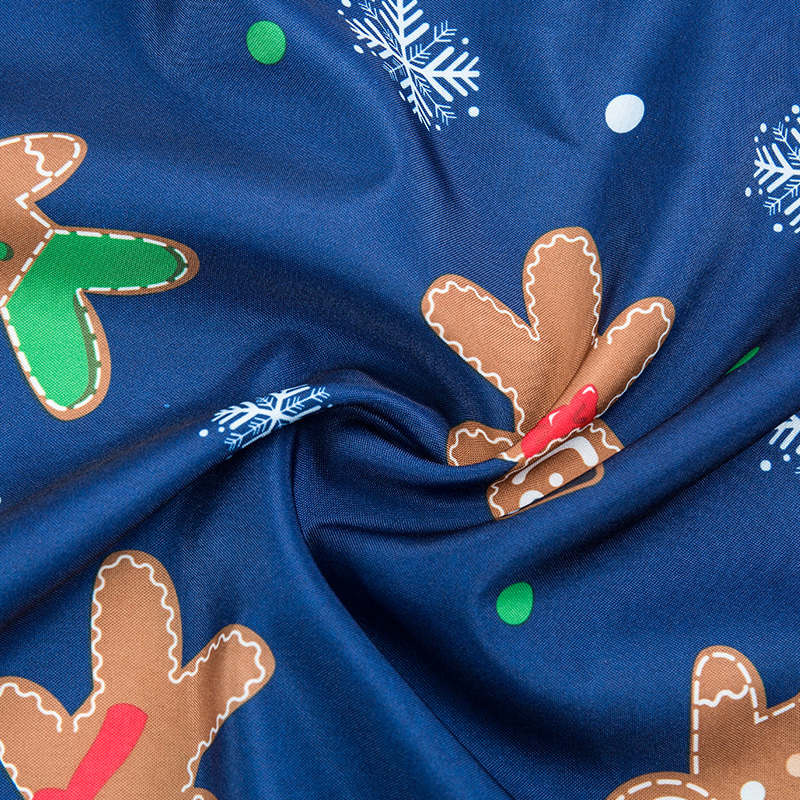 2024.12.12
2024.12.12
 Industry news
Industry news
1. Basic principle of wrinkle resistance
Wrinkle resistance is derived from the structural characteristics of fibers and their chemical and physical properties. Generally speaking, the wrinkle resistance of textile materials depends on the following factors:
Molecular structure of fibers:
The wrinkle resistance of materials is closely related to the molecular structure of their fibers. Natural fibers (such as cotton, linen, and silk) usually have high hygroscopicity, easily absorb water and swell, causing the fabric to wrinkle. Synthetic fibers (such as polyester and nylon) have better wrinkle resistance because of their stable molecular chain structure and are not easy to absorb moisture.
Thermoplasticity of fibers:
Synthetic fibers such as polyester and nylon have certain thermoplasticity, that is, when heated, the fibers become soft and can be reshaped. When polyester or nylon fabrics are subjected to external pressure, they can be restored to their original flat state through heat treatment (such as ironing) to reduce the formation of wrinkles.
Textile technology:
The weaving and processing technology of fabrics also play a key role in wrinkle resistance. Fabrics with higher density (such as Oxford fabric) have improved stretch resistance and wrinkle resistance due to the tight interweaving of yarns. In addition, the finishing process of fabrics (such as anti-wrinkle finishing) can also significantly improve its wrinkle resistance.
Surface treatment:
Surface treatment of fabrics (such as adding anti-wrinkle agents or performing resin finishing) is also a common method to improve wrinkle resistance. Through these treatments, a protective film can be formed on the fiber surface, thereby preventing the fabric from creases and wrinkles when subjected to external pressure.
2. Wrinkle resistance of polyester/nylon Oxford fabric
Polyester Oxford Fabric and Nylon Oxford Fabric are two common materials in synthetic fibers. They are widely used in various products on the market because of their excellent wrinkle resistance, such as backpacks, outdoor products, household products, etc. The following is the performance of polyester and nylon Oxford fabrics in wrinkle resistance:
Wrinkle resistance of Polyester/Nylon Oxford Fabric: Polyester Oxford fabric is known for its excellent wrinkle resistance. Polyester fiber has a stable molecular structure and poor hygroscopicity, so it is not easy to absorb water and swell, which makes polyester fabrics less likely to wrinkle after washing. Even after long-term use or folded storage, polyester Oxford cloth can quickly restore its original shape and is not easy to leave deep wrinkles. This feature makes polyester Oxford cloth the preferred material in many application scenarios, especially in products that need to maintain a smooth and flat appearance for a long time (such as backpacks and suitcases).
In addition, the wrinkle resistance of polyester Oxford cloth is also due to its thermoplastic properties. By heating or ironing, polyester fibers can be restored to their original flat state, which is particularly convenient for many consumers, especially when handling some large items.
Nylon Oxford cloth's wrinkle resistance: Nylon Oxford cloth also has certain advantages in wrinkle resistance compared to polyester Oxford cloth. Nylon fiber itself is more durable and has stronger tear resistance than polyester, which also helps nylon Oxford cloth stay flat during use. However, nylon's wrinkle resistance may be slightly inferior to polyester in high temperature environments, especially when folded and stored for a long time, some wrinkles may appear, but these wrinkles can usually be restored by ironing or heating.
Finishing technology for wrinkle resistance: Although polyester and nylon Oxford cloths have good wrinkle resistance, many manufacturers will treat the fabrics through finishing processes to further enhance their wrinkle resistance. For example, by coating resins, using anti-wrinkle finishing agents and other technologies, the fabrics can be better kept flat when subjected to external pressure. Especially in some high-end products (such as high-end backpacks and fashion bags), the use of these processing technologies can effectively extend the service life of the fabrics and reduce appearance problems caused by wrinkles.
3. Practical application of wrinkle resistance
Wrinkle resistance not only provides convenience for consumers in daily wear and use, but also plays a vital role in some specific applications:
Travel and outdoor products: Polyester/nylon Oxford cloth is often used to make travel bags, backpacks and tents. These products usually need to be folded, compressed or placed for a long time, so their wrinkle resistance determines the appearance and comfort of the product after use. Oxford cloth with good wrinkle resistance can maintain a flat appearance during long-term use, so that travelers do not have to worry about wrinkles that are difficult to recover after long-term storage.
Work clothes and sportswear: In some work environments that require frequent activities (such as outdoor work, construction site work, etc.), wrinkle-resistant polyester/nylon Oxford cloth is very practical. Since these garments usually need to be kept clean and flat during high-intensity work, wrinkle-resistant fabrics can effectively reduce wrinkles and deformation of clothing, and improve wearing comfort and beauty.
Home furnishings: Polyester/nylon Oxford cloth is also widely used in home products such as curtains, tablecloths and sofa covers. These products are usually affected by sunlight, air and daily use, so fabrics with wrinkle resistance can ensure their long-lasting and smooth appearance.
